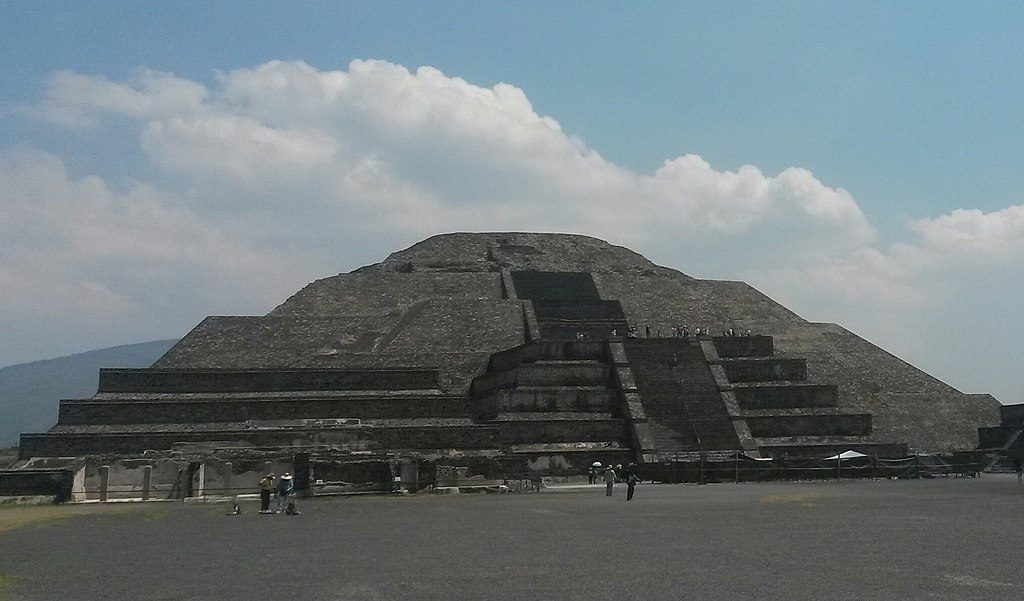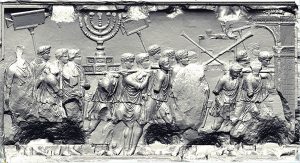At the heart of the mighty Aztec empire laid the capital Tenochtitlan, the Venice of the new world. No other civilization at the time could hope to compare to the city’s impressive pyramids, glamorous temples, and advanced aqueducts. At one point in history, Tenochtitlan was so populous that it contained around 200,000 inhabitants. But Tenochtitlan wasn’t always such a powerful urban site. When the Aztecs were immigrants looking for a new home, they were captivated by a mysterious ancient city. To this day, no one really knows who built it or what happened to its inhabitants. But to the Aztecs, they believed that out of this city emerged the whole of human society and order. This once glorious city was known as Teotihuacán.

There is only a minuscule amount of knowledge about Teotihuacán because a sufficient written record of the city does not exist. In fact, no one knows what the people of Teotihuacán called themselves or what the actual name of the city was. Indeed, it wasn’t until much later that the Aztecs named it Teotihuacán, which means “city of the gods.”1 To an extent, the Aztecs were not exaggerating, because Teotihuacán was once an electrifying center for religion, trade, and culture. At one point, the city contained over 2,000 apartment buildings, 600 pyramids, around 500 workshops, and countless temples, plazas, and palaces.2 But how, exactly, did Teotihuacán become such a powerful metropolis? Once again, let us look at what the Aztecs themselves have to say about it.
According to an Aztec legend, the world was created and destroyed four times before the creation of our current world. Each time the world was destroyed, the sun quickly perished alongside it, and a new sun, presided by a god, was required to create another world.3 The first world was under the dominion of Tezcatlipoca–the god of the night. During his era as the sun, there were no humans, but rather a race of vegetarian giants that roamed the Earth. Tezcatlipoca’s reign lasted for 676 years, but it was cut short when Quetzalcoatl, the god of the wind, grew displeased as he saw the other deity ruling above the land. So he used his staff to knock down Tezcatlipoca into the seas at the farthest corners of the earth. Angered by this, Tezcatlipoca gathered his strength and emerged from the water as a powerful jaguar, running through the Mesoamerican plains and mountains. Soon, many jaguars appeared alongside him, and they eventually hunted and killed every giant on Earth–thus bringing an end to the first world.4
Quetzalcoatl then presided over the second world and, under his rule, human-like beings began to appear. His reign was only 364 years long, however, for Tezcatlipoca wanted revenge on his cosmic rival. Using his dark powers to overwhelm the wind god, he launched a massive hurricane that swept away the sun and the people. Darkness then covered the world and the survivors hid in the trees, eventually turning into monkeys.5

Tlaloc, the rain god, found opportunity in the darkness, and quickly took charge over the new third world. Much to Tlaloc’s dismay, Quetzalcoatl was displeased with his rule, and he sent a rain of fire that again destroyed the sun and earth. The survivors who hid from the fire became the ancestors of the dogs, turkeys, and butterflies of today. The goddess of the lakes and oceans, known as Chalchiúhtlicue, then presided over the fourth sun and world. Although her reign lasted much longer than the previous two, tragedy was no stranger to the gods. Although no one knows exactly how the fourth world ended, Aztec accounts seem to tell the story of a great flood covering the Earth, turning the inhabitants of that world into fish, whales, and other creatures of the deep ocean.6
After some time, all the gods gathered at Teotihuacán. The earth was filled with darkness and a new sun was needed. The gods also decided that a moon should provide light when the sun did not. The rich god Tecuciztécatl proudly stepped forth to be the new sun. But a small, humbler god, Nanahuatzin also volunteered. After agreeing to share the Earth, the two made preparations to renew the world.7 For four days, Tecuciztécatl and Nanahuatzin prayed and fasted.8 When they finished, the other gods lit a great fire on the hard earth of Teotihuacán. In his lavish robes, Tecuciztécatl threw valuable quetzal feathers, stone flints, and incense into the fire as sacrifices. Nanahuatzin, having no riches to sacrifice, humbly offered weeds drenched in his own blood. The two slowly then approached the menacing flames of the fire. Tecuciztécatl intended to go first but he was ultimately driven back by the heat of the inferno. He approached it again for the second time… the third… the fourth. No matter what he did, the rich god was being held back by his fear. Then Nanahuatzin stepped forward. With his eyes closed and mind stilled, Nanahuatzin leapt into the great fire. Having been awestruck by his rival, Tecuciztécatl quickly rushed into the flames. Nanahuatzin then became the new sun, while Tecuciztécatl became the moon.9

The gods then waited for the new world to develop. However, after a while, the gods noticed that nothing was happening. Why wasn’t the new sun in motion? Why hadn’t the world been fully restored? After a discussion with Nanahuatzin, the rest of the gods then threw themselves into the fire, one by one, to restart the world. After all the gods sacrificed themselves, the age of the fifth sun began, and the world was now in motion. It was then, that out of Teotihuacán human society was born. The city flourished under the leaders and priests of Teotihuacán and it is said that after their deaths the pyramids of the sun and moon were built by giants.10
Though we may never know how this city actually came to be, it is no mystery that Teotihuacán was once a revered city in Mesoamerica. To this day, many visit the ruins of Teotihuacán and observe its sites, such as the “Avenue of the Dead,” a two-mile road that connects the Pyramid of the Moon to a large market. Other wonders include the towering Pyramid of the Sun, which was once a revered ritual site because it was built over a cave that many once believed was the place where humans emerged into the world.11 Some of the palaces and temples still stand today, such as the famed temple of Quetzalcoatl. While Teotihuacán may have a murky history, its name continues to stand against the sands of time, eternally offering its mysterious beauty to curious observers everywhere who yearn to learn more of humanity’s past.
- Early Civilizations in the Americas Reference Library, 2005, s.v. “Teotihuacán,” by Sonia G. Benson. ↵
- Charles Phillips, Aztec and Maya: The Complete Illustrated History: The Greatest Civilizations of Ancient Central America with 1000 Photographs, Paintings and Maps (New York: Metro Books, 2008), 55. ↵
- Early Civilizations in the Americas Reference Library, 2005, s.v. “Teotihuacán,” by Sonia G. Benson. ↵
- Charles Phillips, Aztec and Maya: The Complete Illustrated History: The Greatest Civilizations of Ancient Central America with 1000 Photographs, Paintings and Maps (New York: Metro Books, 2008), 160. ↵
- Charles Phillips, Aztec and Maya: The Complete Illustrated History: The Greatest Civilizations of Ancient Central America with 1000 Photographs, Paintings and Maps (New York: Metro Books, 2008), 160. ↵
- Charles Phillips, Aztec and Maya: The Complete Illustrated History: The Greatest Civilizations of Ancient Central America with 1000 Photographs, Paintings and Maps (New York: Metro Books, 2008), 161. ↵
- Charles Phillips, Aztec and Maya: The Complete Illustrated History: The Greatest Civilizations of Ancient Central America with 1000 Photographs, Paintings and Maps (New York: Metro Books, 2008), 161. ↵
- Early Civilizations in the Americas Reference Library, 2005, s.v. “Teotihuacán,” by Sonia G. Benson. ↵
- Charles Phillips, Aztec and Maya: The Complete Illustrated History: The Greatest Civilizations of Ancient Central America with 1000 Photographs, Paintings and Maps (New York: Metro Books, 2008), 162. ↵
- Early Civilizations in the Americas Reference Library, 2005, s.v. “Teotihuacán,” by Sonia G. Benson. ↵
- World History Encyclopedia, 2011, s.v. “The Teotihuacan Empire, 300–650 CE,” by Alfred J. Andrea. ↵




102 comments
Aurora Torres
I really enjoyed your article. I just very interesting that they really do not know much about how this place existed. Many people have said aliens have a lot to do with it, but I do not think so. Also, to read about that the place where they committed their ritual was still there today is crazy! In a sense I feel that after so many years of sacrificing people for their gods was very terrifying, and it had to come to an end when the conquistadors captured and took over when they burned the city everything with it as well. Too much evil was going on and it had to be stopped. Hopefully one day I can go visit this place in person and reading your article I know a little bit more regarding Tenochtitlan.
Yanelle Nicholson
The author of this article does an excellent job explaining the legend of Tenochtitlan. I did not know that there was no information about the origins of that city, only what the legend of the Aztecs tells us. It is very interesting how they say the world was created and destroyed four times before the world we live in today. The author explained in detail how the world was created and destroyed and what gods were involved in the process.
Daniel Gimena
I think that legends and myths, specially from the ancient societies of Mesoamerica and South America are very interesting.
There are so many things still unknown and to be discovered about those societies, that legends sometimes are the only explanation we could give to some unanswered questions. I think legends like this one that the Aztecs gave to the city of Teotihuacan, can reveal a lot of things about how this ancient people thought, acted and lived.
It fascinates me how different this people conceived the creation of the world and humankind, if we compared it with big religions like Islam or Christianity.
In my opinion, the work of people like the author, that try to keep alive this legends and myths, is very important. This histories are a big part of the legacy that ancient societies like the Aztecs or the Teotihuacan people have left behind them.
Trenton Boudreaux
It’s fascinating how little we know about Native American history. To think that there was an entire empire, with its own history, separate from ours is incredible. It’s a shame we don’t have a lot to work off, as more knowledge about the history of the Americans would surely revolutionize how we view ourselves and our world. A fascinating article on an ancient yet important city.
Maria Ferrer
As a Mexican, it fills me with pride to read about Teotihuacan. The author did a great job at portraying the story with the little information that we have. Legends are part of our culture so, it was very interesting to read about Quetzalcoatl and Tlaloc. Hopefully, many will enjoy this article as much as I did, and they can get a sneak pick of Mexican history.
Paulina Gonzalez
Your article on Tenochtitlan and its people is very interesting. the article captured the mystery and wonder of the land. I remember when a few years ago I visited the sun and moon pyramids but never gave much thought to the story behind them. I learned so much, especially when you mentioned the gods and how they decided to have a new moon and sun to prevent the darkness of the earth. The sources that were used were very insightful which shows that you did the proper research for this topic.
Jonathan Ornelaz
Alexander,
I thought your article on the Tenochititlan people was very fascinating. You were able to tell the mystery of the land might have become a legend. Like you expressed there is no way of really knowing, because there is no accurate written record, but to think that there were these gods who fought among themselves and every time they thought they had the perfect setup one of the other gods did not like it and destroyed it. It was not until they finally realized that they all need each other to keep the world in balance that they all sacrificed themselves to make a great land that the people were successful and were able to build their lives up and thrive.
Jonathan Ornelaz
Alexander,
I thought your article on the Tenochititlan people was very fascinating. You were able to tell the mystery of the land might have become a legend. Like you expressed there is no way of really knowing, because there is no accurate written record, but to think that there were these gods who fought among themselves and every time they thought they had the perfect setup one of the other gods did not like it and destroyed it. It was not until they finally realized that they all need each other to keep the world in balance that they all sacrificed themselves to make a great land that the people were successful and were able to build their lives up and thrive.
Hailey Lechuga
It was extremely intriguing to read about the legends of Teotihuacan, and it is fascinating to learn about the way that these peoples viewed the world. It is really unfortunate that there aren’t sufficient collections of written records, but that makes the attraction to uncovering the truth about the fallen city that much more captivating. This article was extremely well written and it was fascinating to read about recollections of the legends in the depth that you provided with your explanations!
Celeste Loera
This article was very interesting! I remember learning about this city in one of my classes and I always wondered what could have happened for it and the citizens to mysteriously disappear. It is also fascinating to see many of the gods and myths that the city had to offer, I am also surprised how it still has no records about the city.